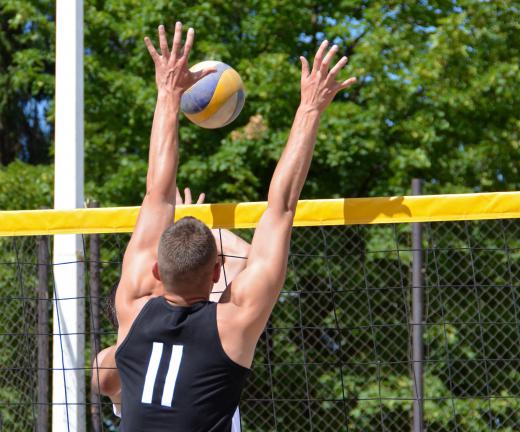Biomechanics is the study of the body in a mechanical sense. This field attempts to make sense of the complexity of human movement by looking at the parts involved, analogous to the manner in which a car mechanic may explain how a vehicle works. The biomechanics of volleyball refers to the application of this field specifically to the movements in the sport.
The movements of volleyball are a complex combination of strength, power, agility, and finesse. Each of these components is comprised of intricate, small movements, the summation of which are coordinated acts of striking the volleyball in a desired fashion. Due to the many aspects related to the biomechanics of volleyball, not every strike of the ball is perfect. Many times, mistakes made by athletes are due to the impossibility of executing hundreds of tiny movements perfectly every single time.

The complexity of the sport makes it impossible to explore every side of the biomechanics of volleyball here. It is helpful to instead focus on a few motions to gain a greater understanding of this field. A great example of the many aspects of volleyball can be outlined by reviewing the motions of the jump serve.
The jump serve requires an approach, jump, as well as shoulder and arm motion all working together to strike the ball at the right time in the proper manner. The list of muscles involved in these movements is long. Among them are the quadriceps and hamstrings in the legs, deltoids in the shoulders, and triceps, biceps, and the muscles of the hand and forearm. A person studying the biomechanics of volleyball would be concerned with these and other related muscle groups.

The knowledge gained from studying the biomechanics of volleyball can help prevent injury, improve technique, and make an elite athlete perform to the best of his or her ability. This analysis can take place in a number of ways. Scientists may study videotape of a volleyball player in action or perhaps may use a biomechanics laboratory.
Biomechanics labs are places where special equipment exists which aids the measuring, recording, and analyzing of data in the name of acquiring new knowledge. These high-tech facilities may be privately owned by a performance enhancement company or publicly funded in the name of academia as in the case of a state university. The importance of biomechanical knowledge is abundant, and thankfully, there are bright minds dedicated to unlocking the secrets surrounding this field.
